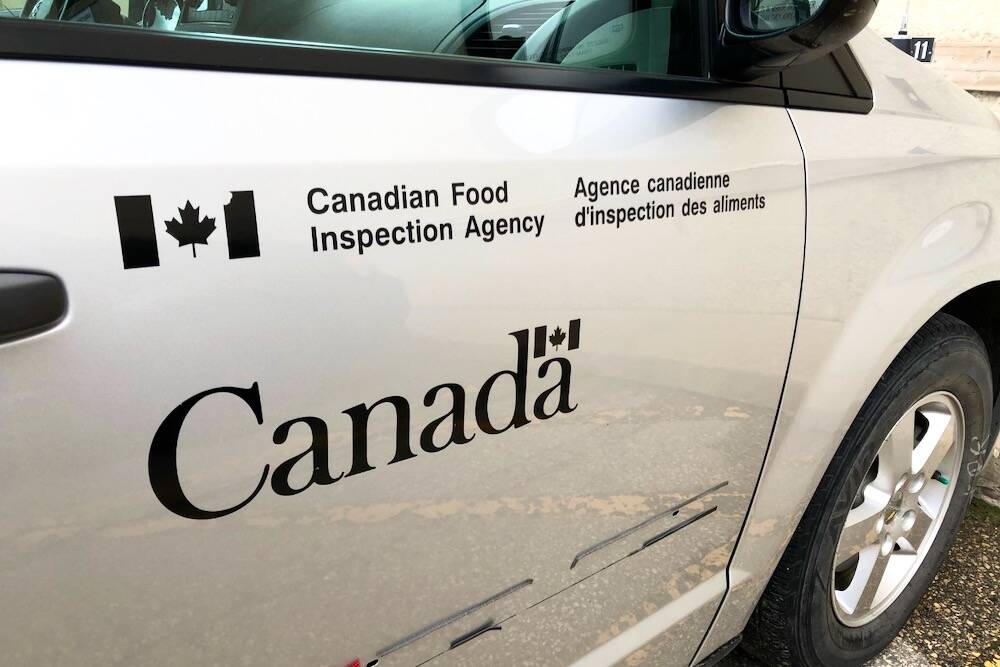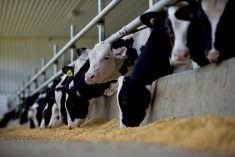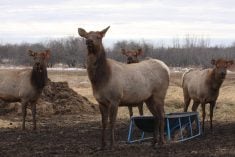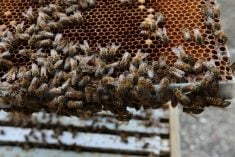Moving live captive cervids such as elk, deer, moose and caribou into or within Ontario is set to be banned under new provincial regulations to keep out chronic wasting disease (CWD).
The province said Thursday it has amended regulations under its Fish and Wildlife Conservation Act that will ban anyone from importing live, captive cervids into Ontario “with some exceptions.”
Any of those exceptions will need a permit from the provincial natural resources and forestry ministry (MNRF). To get that, the cervids must have “fully certified status” from a CWD herd certification program and may only be imported from jurisdictions free from CWD during the six-year period up to the date they’re moved.
Read Also

B.C. ostriches culled, CFIA confirms
Ostriches on an embattled Edgewood, B.C. farm have been culled after a prolonged legal battle, the Canadian Food Inspection Agency has confirmed.
Imported cervids must either be headed for slaughter, in transit through the province in a sealed vehicle, or en route to a captive herd facility that meets biosecurity rules.
The new rules also prohibit people from moving live cervids from one part of Ontario to another — again, with “some exceptions,” such as for slaughter, export or veterinary care, or for livestock shows where the cervids have no contact with other animals. Otherwise, the animals being moved will need an MNRF permit.
The rules announced Thursday also expand the province’s ban on the use or possession of lures, scents or attractants made from cervid parts such as urine, feces, blood or gland oils. The new amendments will ban those products for “any purpose,” not just hunting.
The rules also expand the province’s ban on import of “high-risk” parts of cervids that were hunted in other jurisdictions.
People may only bring in “butchered, deboned and packaged” meat, finished taxidermy mounts, tanned hides and skull plates and antlers from which all tissue has been removed — and in those cases, only from animals that haven’t tested positive for CWD. Anyone who later learns his or her cervid products came from a CWD-positive animal must notify the MNRF and dispose of the products accordingly.
The amendments were filed Wednesday, following public consultations than ran from mid-July through August. All the new rules come into effect Jan. 1, 2021.
CWD is one of the transmissible spongiform encephalopathy (TSE) family of fatal nervous system diseases such as BSE in cattle, scrapie in sheep and Creutzfeldt-Jakob disease in people. The disease is federally reportable in Canada, meaning any and all suspected cases must be reported to the Canadian Food Inspection Agency.
In Canada, CWD has been found mainly in deer and elk populations — both wild and farmed — in Saskatchewan and Alberta, along with “sporadic” confirmed cases in wild moose, according to CFIA. CWD in 2018 also turned up in a farmed herd of red deer in Quebec’s Laurentides region.
“While it has not been detected in Ontario, it is important to remain vigilant,” the Ontario government said Thursday, noting the infected Quebec herd was near the Ontario border and CWD has also been found in all five U.S. states that border Ontario.
Evidence suggests the infectious abnormally-folded proteins, or prions, that cause CWD can pass between cervids by direct contact or through contaminated feed, soil, and/or water sources with saliva, urine and/or feces from infected animals.
No evidence has yet shown CWD can affect humans, but the World Health Organization and other such bodies recommend against eating meat or consuming any products from animals known to be infected with TSEs.
Conservation officials in neighbouring Manitoba have also urged hunters not to shoot animals that look sick. If a hunter shoots a deer or elk that appears unhealthy and/or extremely thin, its carcass should not be field dressed. — Glacier FarmMedia Network














